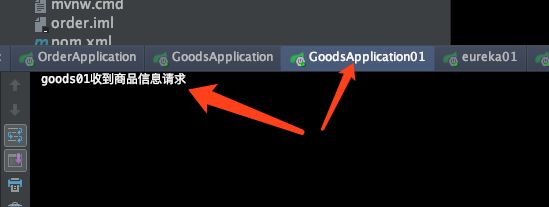- OSI 网络模型:互联网通信的七层架构
山禾女鬼001
网络架构
在现代计算机网络中,OSI(开放系统互联)模型是一个重要的概念,它为网络通信过程提供了标准化的框架。这个模型帮助我们理解不同网络协议在通信过程中的作用,并为网络设备和系统的设计与故障排除提供了理论依据。什么是OSI模型?OSI模型(OpenSystemsInterconnectionModel,开放系统互联模型)由国际标准化组织(ISO)于1984年提出,目的是为不同厂商和不同类型的计算机网络设备
- 数据项目相关的AWS云计算架构设计
weixin_30777913
云计算数据仓库awssparkpython
电商数据平台架构高性能:使用AmazonEC2的计算优化实例处理业务逻辑和数据计算,搭配AmazonElastiCache内存缓存,加速数据读取。应用负载均衡器(ALB)在EC2实例间分发流量,实现负载均衡。高可用性:采用多可用区(Multi-AZ)部署,将EC2实例、数据库等资源分布在多个可用区。使用AmazonRDS并开启多AZ部署,实现数据库自动故障转移。利用AWSAutoScaling根据
- CDH大数据平台
梦龙zmc
大数据大数据
CDH概念CDH(ClouderaDistributionIncludingApacheHadoop)是由Cloudera公司提供的一个集成了ApacheHadoop以及相关生态系统的发行版本。CDH是一个大数据平台,简化和加速了大数据处理分析的部署和管理。CDH提供Hadoop的核心元素-可伸缩存储和分布式计算-以及基于web的用户界面和重要的企业功能。CDH是Apache许可的开放源码,是唯一
- 解决并发问题的方法
梦龙zmc
devops
解决并发问题的方法常见有三种,它们分别是:使用缓存、使用异步处理、以及使用负载均衡。这些方法通过不同的方式提升系统的并发处理能力,减少等待时间,以及优化资源分配,从而提高系统的整体性能和稳定性。使用缓存:通过缓存机制来减少系统的数据库和文件系统等I/O操作,从而提升系统的响应速度和并发能力。缓存可以包括页面缓存、数据缓存、分布式缓存等,通过将热点数据存储在内存中,减轻数据库的访问压
- 即时通讯技术文集(第42期):直播技术合集(Part2) [共13篇]
即时通讯im网络编程
为了更好地分类阅读52im.net总计1000多篇精编文章,我将在每周三推送新的一期技术文集,本次是第42期。[-1-]实时音频的混音在视频直播中的技术原理和实践总结[链接]http://www.52im.net/thread-1904-1-1.html[摘要]今天,我们就来聊一聊混音技术在视频直播应用中的实现原理、方案等,及其在创新玩法中的实践应用。[-2-]七牛云技术分享:使用QUIC协议实现
- 如何控制主从架构的数据一致性?
架构随笔录
分布式存储大数据架构数据库java后端中间件
胡弦,视频号2023年度优秀创作者,互联网大厂P8技术专家,SpringCloudAlibaba微服务架构实战派(上下册)和RocketMQ消息中间件实战派(上下册)的作者,资深架构师,技术负责人,极客时间训练营讲师,四维口袋KVP最具价值技术专家,技术领域专家团成员,2021电子工业出版社年度优秀作者,获得2023电子工业出版技术成长领路人称号,荣获2024年电子工业出版社博文视点20周年荣誉专
- 16 分布式session和无状态的会话
40岁的系统架构师
分布式系统架构
在我们传统的应用中session存储在服务端,减少服务端的查询压力。如果以集群的方式部署,用户登录的session存储在该次登录的服务器节点上,如果下次访问服务端的请求落到其他节点上就需要重新生成session,这样用户需要频繁的登录。nginx使用iphash的方式代理服务当nginx使用该方式代理请求转发时,相同ip的用户请求会落到相同的机器上,这样就可以避免了频繁的登录。该方式部署简单,在n
- 【橘子微服务】spring cloud function的编程模型
玄衣如雪
微服务springcloud架构
简介在我们初探了saga的分布式事务之后,我们后面会基于springcloudfunction(简称:scf)和springcloudstream(scs)实现一下Choreography模式的saga。所以在此之前我们需要了解一下这两个组件的知识。首先我们来看scf的一些概念。一、简单使用在进入概念之前,我们先来看看这玩意咋用,然后我们再铺开讲设计和知识,不然上来一堆废话不知道说的是谁。简单来创
- 橘子学Mybatis09之Mybatis关于二级缓存的使用
玄衣如雪
#Mybatismybatis
前面我们说了一级缓存,但是实际上我们说那玩意其实不咋实用。于是既然设计了缓存体系,就不可能弄个不实用的给人们。所以这里就引出二级全局缓存。全局缓存就是无视sqlSession,你可以理解为一个分布式的缓存。作为全局的访问。一、二级缓存1、开启方式二级缓存默认是不开启的,所以他需要你手动去开启。开启方式需要满足下面四个条件。1、需要在核心配置文件,我的是sqlMapConfig.xml中指定,在SE
- grafana+prometheus+nginx监控负载均衡
杰森斯坦森1150
性能测试#性能监控工具nginxlinux
目录一、安装java项目二、安装nginx三、安装nginx-vts-export四、配置nginx五、启动nginx-vts-export六、安装promethus七、安装grafana一、安装java项目安装jdk,安装tomcat,请参看文章一台linux服务器上配置多台tomcat二、安装nginx请参考文章Linux安装nginx步骤三、安装nginx-vts-export1.安装git
- PLS_INTEGER:Oracle PL/SQL中的整数类型深度解析
小小野猪
OraclePL/SQL语法与案例深度解析oraclesql数据库PLS_INTEGER
PLS_INTEGER:OraclePL/SQL中的整数类型深度解析一、概述二、PLS_INTEGER简介三、PLS_INTEGER的优点四、PLS_INTEGER的简单示例示例1:声明并使用PLS_INTEGER变量示例2:在存储过程中使用PLS_INTEGER五、资深应用的代码示例示例3:使用PLS_INTEGER进行复杂的数学计算六、结论七、学习与成长一、概述在Oracle数据库中,PL/S
- GaussDB 24.1.30 分布式3节点命令行方式部署(1)
没有星期叭
gaussdb分布式
GaussDB介绍华为自主创新研发的分布式关系型数据库。该产品具备企业级复杂事务混合负载能力,同时支持分布式事务,同城跨AZ部署,数据0丢失,支持1000+的扩展能力,PB级海量存储。同时拥有云上高可用,高可靠,高安全,弹性伸缩,一键部署,快速备份恢复,监控告警等关键能力,能为企业提供功能全面,稳定可靠,扩展性强,性能优越的企业级数据库服务。服务器环境–查操作系统版本cat/etc/.kyinfo
- Spring Boot集成RocketMQ实现分布式事务
missterzy
分布式与微服务消息队列(MQ)java-rocketmqspringbootrocketmq
RocketMQ是由阿里巴巴集团开发的一款高性能、高可靠、分布式的开源消息中间件,它在2012年对外开源,并于2016年捐赠给Apache软件基金会,随后在2017年成为了Apache的顶级项目。RocketMQ的设计旨在满足互联网业务场景中的海量消息传递需求,尤其擅长处理高并发、大数据量以及实时计算场景。主要特点和功能包括:1.分布式架构:RocketMQ采用了分布式部署架构,允许生产者、消费者
- Kafka的Partition故障恢复机制与HW一致性保障-Epoch更新机制详解
大树~~
#Kafkajavakafka分布式后端
在分布式系统中,节点的故障是不可避免的。为了确保系统的高可用性和数据的一致性,Kafka设计了一系列机制来应对Broker或Partition的故障。本文将详细解析Kafka的Partition故障恢复机制和HW一致性保障-Epoch更新机制,帮助深入理解Kafka在面对故障时的处理逻辑和一致性保障手段。一、Partition故障恢复机制1.概述Kafka中的每个Topic被划分为多个Partit
- 分布式光纤传感技术为何现在是传感行业的主流技术?
无锡布里渊
分布式光纤测温温度监测火灾预警厘米级线型感温火灾监测
近年来,光纤传感技术迅速发展,正逐步成为继光纤通信产业发展之后又一大光纤应用技术产业,其中分布式光纤传感技术是国内外研究的热点之一。分布式光纤传感技术将光纤作为传感介质,将光波作为信息载体,通过探测光信号强度、频率、相位、偏振态的变化,从而解调出温度、应变等外界信息。光纤温度传感器是应用最广泛的光纤传感器之一,具有耐腐蚀、耐高温、抗干扰、结构紧凑、精度高、适合远距离传输等特点,可以满足恶劣环境的温
- 如何理解分布式光纤测温DTS的分布式的概念?
无锡布里渊
分布式
分布式传感技术是一种相对于点式传感技术的创新型传感方式,通过将传感器分散在整个被测区域内,形成一个连续的传感网络。相较于传统的点式传感技术,分布式传感技术具有许多独特的优势。以温度传感为例,让我们来深入了解其应用与优势。假设我们在一个被测区域内,使用1000个温度传感器间隔1米串联,每个传感器的尺寸为5毫米。当我们在其中一个传感器附近使用打火机进行近距离加热时,这个传感器可以感知到温度的变化。然而
- 分布式Id方案选择
东百牧码人
Java分布式
分布式ID方案选择在当今分布式系统日益盛行的背景下,分布式ID生成方案的选择成为了众多开发者关注的焦点。一个优秀的分布式ID方案,不仅能够确保生成的ID全局唯一,避免数据冲突,还能在高并发、大规模的分布式环境中保持高性能、高可用性,同时兼顾易用性和可扩展性。以下将从多个维度对比分析几种主流的分布式ID生成方案,以期为实际业务场景中的选择提供参考。一、基于数据库的方案(一)数据库自增ID数据库自增I
- Go语言基础(二) 指针和函数
胡小禾
gopythongo
文章目录一、指针1.1指针地址和指针类型1.2指针取值1.3指针传值二、newmake2.1new2.2make2.3newVSmake三、函数3.1声明函数3.2函数返回值3.3返回值3.4返回值补充四、函数类型与变量五、高级函数5.1把函数作为入参5.2把函数作为返回值5.3匿名函数5.4闭包六、defer七、go内置函数八、panicrecover一、指针Go中的指针和C中的指针不同,Go中
- 消息队列篇--通信协议篇--网络通信模型(OSI7层参考模型,TCP/IP分层模型)
weisian151
消息队列篇tcp/ip网络网络协议
一、OSI参考模型(OpenSystemsInterconnectionModel)OSI参考模型是一个用于描述和标准化网络通信功能的七层框架。它由国际标准化组织(ISO)提出,旨在为不同的网络设备和协议提供一个通用的语言和结构,以促进相互操作和标准化。OSI模型将网络通信过程划分为七个层次,每一层都有特定的功能,并与相邻层进行交互。从下到上,这七层分别是:1、物理层(PhysicalLayer)
- 分布式通信框架--RMI
王婷婷-Smily
分布式分布式
文章目录分布式对象模型远程对象本地对象模型RMI基本原理如何实现分布式对象模型远程对象不仅是可以被本地进程访问,也可以远程进程调用;本地对象仅仅可以是本地进程使用模型下图中,A、B各代表一台服务器,当他们各自自己调用的时候,即为本地对象,当A中的对象调用B中的,则为远程对象,这时候如果要保证A、B中的对象之间能够可靠的进行消息通信,采用的是TCP协议作为通信协议RMI基本原理 分布式对象模型有很多
- Go分布式爬虫笔记(八)_golang分布式爬虫
2401_87299701
golang分布式爬虫
+爬虫引擎为基础的推送系统+提供-快速的热点事件-事件预警用户需求快速了解自己感兴趣的最新新闻事件预警机制帮助快速决策功能需求用户填写或选择自己感兴趣的话题、感兴趣的网站还有消息接受频率用户接收最新热点事件的推送用户通过点击获取与该事件关联的事件,并得到相关的事件预测、预警,甚至可能在网站中进行快速的交易用户可以查看历史记录,可视化呈现某一个事件的来龙去脉,并进行复盘产品需求前端页面设计用户交互设
- redis+spring面试题
javaspringredis
redis使用场景缓存热点数据分布式锁存储token存储短信验证码计数器全局唯一数排行榜限流购物车关注粉丝缓存失效缓存穿透缓存空结果布龙过滤器缓存击穿全局锁设置永不过期缓存雪崩设置高可用集群设置不同的过期时间本地二级缓存,限流加降级数据一致性延时双删集群最大部署多少个主节点16384string的存储内存多大512mlist/set/hash/zset最多可以放多少个体元素2^32-1/42亿re
- Kafka 原理深入解析
啥子都不会吖
分布式kafka分布式
1.Kafka简介ApacheKafka是一个分布式流处理平台,由LinkedIn开发并于2011年开源,后成为Apache软件基金会的顶级项目。核心概念Topic:主题,是消息分类的逻辑概念,生产者将消息发送到特定的Topic,消费者从Topic中订阅消息。Partition:分区,每个Topic可以被划分为多个Partition,每个Partition是一个有序的队列。Broker:Kafka
- 分布式微服务系统架构第87集:kafka
掘金-我是哪吒
分布式微服务系统架构kafka架构
Kafka就是为了解决上述问题而设计的一款基于发布与订阅的消息系统。它一般被称为“分布式提交日志”或者“分布式流平台”。文件系统或数据库提交日志用来提供所有事务的持久记录,通过重放这些日志可以重建系统的状态。同样地,Kafka的数据是按照一定顺序持久化保存的,可以按需读取。此外,Kafka的数据分布在整个系统里,具备数据故障保护和性能伸缩能力。消息和批次消息和批次Kafka的数据单元被称为消息。如
- java jdbc实验_实验七Java之Jdbc
weixin_39969976
javajdbc实验
实验七Jdbc编程1.实验目的(1)掌握通过JDBC方式操作数据库的基本步骤。(2)掌握增、删、改、查记录等的方法。(3)掌握查询记录以及遍历查询结果的方法。2.实验内容实验题1学生信息管理。创建student表,包含学生的学号、姓名、年龄信息。①根据学号,可以查询到学生的姓名和年龄;②给定学生的学号、姓名、年龄,在表中追加一行信息;③给定学生的学号,可以从表中删除该学生的信息;[基本要求]对上面
- 【面试】【详解】计算机网络(TCP 三次握手,四次挥手)
患得患失949
面试考题专栏(前后端)面试计算机网络tcp/ip
一、计算机网络详解(一)计算机网络概述定义:计算机网络是通过传输介质将多台计算机连接起来,以实现数据通信和资源共享的系统。功能:(1)数据通信:实现不同设备之间的数据传输。(2)资源共享:硬件资源(如打印机)和软件资源(如数据库)共享。(3)分布式处理:多台计算机协作完成任务。(二)TCP三次握手1.定义TCP(三次握手)是建立可靠连接的重要步骤,确保双方准备好通信并初始化必要的参数。2.过程详解
- 鸿蒙系统崛起:开发者的机遇、挑战与战略
飞起来fly呀
harmonyos华为鸿蒙系统
随着科技的迅猛发展,鸿蒙操作系统以其独特的分布式架构和多设备协同能力,在全球操作系统市场中脱颖而出。它不仅与安卓和iOS形成了三足鼎立之势,还在智能手机、智能穿戴、车载系统以及智能家居等多个领域中获得了广泛应用。面对这一新兴生态系统,开发者如何抓住机遇,同时应对开发中的各种挑战,创造出更加卓越的应用体验?本文将围绕这些内容进行深度探讨。一、鸿蒙操作系统的技术特色与发展背景1.1鸿蒙系统的诞生与初衷
- Nginx Stream模块的安装与配置
m0_74823947
nginx运维
首先检查是否启用Stream模块如果你的系统上没有找到ngx_stream_module.so文件,这可能意味着在你的Nginx安装中没有启用Stream模块。Stream模块用于处理TCP和UDP流量,通常用于代理、负载均衡和其他网络层级的操作。要启用Stream模块,你需要重新编译Nginx并在编译选项中包含--with-stream。这将确保Stream模块被编译并生成ngx_stream_
- 什么是分布式架构?
找藉口是失败者的习惯
分布式架构
文章目录前言一、什么是分布式架构?1.分布式架构的类型微服务架构:2.服务导向架构(SOA)3.点对点架构4.客户端-服务器架构架构对比分布式架构优缺点总结前言随着互联网的快速发展,越来越多的应用程序需要处理大量用户请求和数据。这促使开发者采用分布式架构,以提高系统的可扩展性和可靠性。本文将通过一个简单的在线外卖平台案例,深入浅出地解释分布式架构的基本概念和优势。提示:以下是本篇文章正文内容,下面
- 一文了解AOSP是什么?
秋月霜风
其他知识标记1024程序员节androidruntime安卓
一文了解AOSP是什么?AOSP基本信息基本定义AOSP是AndroidOpenSourceProject的缩写,这是一个由Google维护的完全免费和开放的操作系统开发项目。它是Android系统的核心基础,提供了构建移动操作系统所需的基本组件。主要特点完全开源:源代码可以自由获取和修改基于Linux内核:使用修改版的Linux内核和其他开源软件主要面向触屏设备:设计优化适配触摸屏设备AOSP与
- jsonp 常用util方法
hw1287789687
jsonpjsonp常用方法jsonp callback
jsonp 常用java方法
(1)以jsonp的形式返回:函数名(json字符串)
/***
* 用于jsonp调用
* @param map : 用于构造json数据
* @param callback : 回调的javascript方法名
* @param filters : <code>SimpleBeanPropertyFilter theFilt
- 多线程场景
alafqq
多线程
0
能不能简单描述一下你在java web开发中需要用到多线程编程的场景?0
对多线程有些了解,但是不太清楚具体的应用场景,能简单说一下你遇到的多线程编程的场景吗?
Java多线程
2012年11月23日 15:41 Young9007 Young9007
4
0 0 4
Comment添加评论关注(2)
3个答案 按时间排序 按投票排序
0
0
最典型的如:
1、
- Maven学习——修改Maven的本地仓库路径
Kai_Ge
maven
安装Maven后我们会在用户目录下发现.m2 文件夹。默认情况下,该文件夹下放置了Maven本地仓库.m2/repository。所有的Maven构件(artifact)都被存储到该仓库中,以方便重用。但是windows用户的操作系统都安装在C盘,把Maven仓库放到C盘是很危险的,为此我们需要修改Maven的本地仓库路径。
- placeholder的浏览器兼容
120153216
placeholder
【前言】
自从html5引入placeholder后,问题就来了,
不支持html5的浏览器也先有这样的效果,
各种兼容,之前考虑,今天测试人员逮住不放,
想了个解决办法,看样子还行,记录一下。
【原理】
不使用placeholder,而是模拟placeholder的效果,
大概就是用focus和focusout效果。
【代码】
<scrip
- debian_用iso文件创建本地apt源
2002wmj
Debian
1.将N个debian-506-amd64-DVD-N.iso存放于本地或其他媒介内,本例是放在本机/iso/目录下
2.创建N个挂载点目录
如下:
debian:~#mkdir –r /media/dvd1
debian:~#mkdir –r /media/dvd2
debian:~#mkdir –r /media/dvd3
….
debian:~#mkdir –r /media
- SQLSERVER耗时最长的SQL
357029540
SQL Server
对于DBA来说,经常要知道存储过程的某些信息:
1. 执行了多少次
2. 执行的执行计划如何
3. 执行的平均读写如何
4. 执行平均需要多少时间
列名 &
- com/genuitec/eclipse/j2eedt/core/J2EEProjectUtil
7454103
eclipse
今天eclipse突然报了com/genuitec/eclipse/j2eedt/core/J2EEProjectUtil 错误,并且工程文件打不开了,在网上找了一下资料,然后按照方法操作了一遍,好了,解决方法如下:
错误提示信息:
An error has occurred.See error log for more details.
Reason:
com/genuitec/
- 用正则删除文本中的html标签
adminjun
javahtml正则表达式去掉html标签
使用文本编辑器录入文章存入数据中的文本是HTML标签格式,由于业务需要对HTML标签进行去除只保留纯净的文本内容,于是乎Java实现自动过滤。
如下:
public static String Html2Text(String inputString) {
String htmlStr = inputString; // 含html标签的字符串
String textSt
- 嵌入式系统设计中常用总线和接口
aijuans
linux 基础
嵌入式系统设计中常用总线和接口
任何一个微处理器都要与一定数量的部件和外围设备连接,但如果将各部件和每一种外围设备都分别用一组线路与CPU直接连接,那么连线
- Java函数调用方式——按值传递
ayaoxinchao
java按值传递对象基础数据类型
Java使用按值传递的函数调用方式,这往往使我感到迷惑。因为在基础数据类型和对象的传递上,我就会纠结于到底是按值传递,还是按引用传递。其实经过学习,Java在任何地方,都一直发挥着按值传递的本色。
首先,让我们看一看基础数据类型是如何按值传递的。
public static void main(String[] args) {
int a = 2;
- ios音量线性下降
bewithme
ios音量
直接上代码吧
//second 几秒内下降为0
- (void)reduceVolume:(int)second {
KGVoicePlayer *player = [KGVoicePlayer defaultPlayer];
if (!_flag) {
_tempVolume = player.volume;
- 与其怨它不如爱它
bijian1013
选择理想职业规划
抱怨工作是年轻人的常态,但爱工作才是积极的心态,与其怨它不如爱它。
一般来说,在公司干了一两年后,不少年轻人容易产生怨言,除了具体的埋怨公司“扭门”,埋怨上司无能以外,也有许多人是因为根本不爱自已的那份工作,工作完全成了谋生的手段,跟自已的性格、专业、爱好都相差甚远。
- 一边时间不够用一边浪费时间
bingyingao
工作时间浪费
一方面感觉时间严重不够用,另一方面又在不停的浪费时间。
每一个周末,晚上熬夜看电影到凌晨一点,早上起不来一直睡到10点钟,10点钟起床,吃饭后玩手机到下午一点。
精神还是很差,下午像一直野鬼在城市里晃荡。
为何不尝试晚上10点钟就睡,早上7点就起,时间完全是一样的,把看电影的时间换到早上,精神好,气色好,一天好状态。
控制让自己周末早睡早起,你就成功了一半。
有多少个工作
- 【Scala八】Scala核心二:隐式转换
bit1129
scala
Implicits work like this: if you call a method on a Scala object, and the Scala compiler does not see a definition for that method in the class definition for that object, the compiler will try to con
- sudoku slover in Haskell (2)
bookjovi
haskellsudoku
继续精简haskell版的sudoku程序,稍微改了一下,这次用了8行,同时性能也提高了很多,对每个空格的所有解不是通过尝试算出来的,而是直接得出。
board = [0,3,4,1,7,0,5,0,0,
0,6,0,0,0,8,3,0,1,
7,0,0,3,0,0,0,0,6,
5,0,0,6,4,0,8,0,7,
- Java-Collections Framework学习与总结-HashSet和LinkedHashSet
BrokenDreams
linkedhashset
本篇总结一下两个常用的集合类HashSet和LinkedHashSet。
它们都实现了相同接口java.util.Set。Set表示一种元素无序且不可重复的集合;之前总结过的java.util.List表示一种元素可重复且有序
- 读《研磨设计模式》-代码笔记-备忘录模式-Memento
bylijinnan
java设计模式
声明: 本文只为方便我个人查阅和理解,详细的分析以及源代码请移步 原作者的博客http://chjavach.iteye.com/
import java.util.ArrayList;
import java.util.List;
/*
* 备忘录模式的功能是,在不破坏封装性的前提下,捕获一个对象的内部状态,并在对象之外保存这个状态,为以后的状态恢复作“备忘”
- 《RAW格式照片处理专业技法》笔记
cherishLC
PS
注意,这不是教程!仅记录楼主之前不太了解的
一、色彩(空间)管理
作者建议采用ProRGB(色域最广),但camera raw中设为ProRGB,而PS中则在ProRGB的基础上,将gamma值设为了1.8(更符合人眼)
注意:bridge、camera raw怎么设置显示、输出的颜色都是正确的(会读取文件内的颜色配置文件),但用PS输出jpg文件时,必须先用Edit->conv
- 使用 Git 下载 Spring 源码 编译 for Eclipse
crabdave
eclipse
使用 Git 下载 Spring 源码 编译 for Eclipse
1、安装gradle,下载 http://www.gradle.org/downloads
配置环境变量GRADLE_HOME,配置PATH %GRADLE_HOME%/bin,cmd,gradle -v
2、spring4 用jdk8 下载 https://jdk8.java.
- mysql连接拒绝问题
daizj
mysql登录权限
mysql中在其它机器连接mysql服务器时报错问题汇总
一、[running]
[email protected]:~$mysql -uroot -h 192.168.9.108 -p //带-p参数,在下一步进行密码输入
Enter password: //无字符串输入
ERROR 1045 (28000): Access
- Google Chrome 为何打压 H.264
dsjt
applehtml5chromeGoogle
Google 今天在 Chromium 官方博客宣布由于 H.264 编解码器并非开放标准,Chrome 将在几个月后正式停止对 H.264 视频解码的支持,全面采用开放的 WebM 和 Theora 格式。
Google 在博客上表示,自从 WebM 视频编解码器推出以后,在性能、厂商支持以及独立性方面已经取得了很大的进步,为了与 Chromium 现有支持的編解码器保持一致,Chrome
- yii 获取控制器名 和方法名
dcj3sjt126com
yiiframework
1. 获取控制器名
在控制器中获取控制器名: $name = $this->getId();
在视图中获取控制器名: $name = Yii::app()->controller->id;
2. 获取动作名
在控制器beforeAction()回调函数中获取动作名: $name =
- Android知识总结(二)
come_for_dream
android
明天要考试了,速速总结如下
1、Activity的启动模式
standard:每次调用Activity的时候都创建一个(可以有多个相同的实例,也允许多个相同Activity叠加。)
singleTop:可以有多个实例,但是不允许多个相同Activity叠加。即,如果Ac
- 高洛峰收徒第二期:寻找未来的“技术大牛” ——折腾一年,奖励20万元
gcq511120594
工作项目管理
高洛峰,兄弟连IT教育合伙人、猿代码创始人、PHP培训第一人、《细说PHP》作者、软件开发工程师、《IT峰播》主创人、PHP讲师的鼻祖!
首期现在的进程刚刚过半,徒弟们真的很棒,人品都没的说,团结互助,学习刻苦,工作认真积极,灵活上进。我几乎会把他们全部留下来,现在已有一多半安排了实际的工作,并取得了很好的成绩。等他们出徒之日,凭他们的能力一定能够拿到高薪,而且我还承诺过一个徒弟,当他拿到大学毕
- linux expect
heipark
expect
1. 创建、编辑文件go.sh
#!/usr/bin/expect
spawn sudo su admin
expect "*password*" { send "13456\r\n" }
interact
2. 设置权限
chmod u+x go.sh 3.
- Spring4.1新特性——静态资源处理增强
jinnianshilongnian
spring 4.1
目录
Spring4.1新特性——综述
Spring4.1新特性——Spring核心部分及其他
Spring4.1新特性——Spring缓存框架增强
Spring4.1新特性——异步调用和事件机制的异常处理
Spring4.1新特性——数据库集成测试脚本初始化
Spring4.1新特性——Spring MVC增强
Spring4.1新特性——页面自动化测试框架Spring MVC T
- idea ubuntuxia 乱码
liyonghui160com
1.首先需要在windows字体目录下或者其它地方找到simsun.ttf 这个 字体文件。
2.在ubuntu 下可以执行下面操作安装该字体:
sudo mkdir /usr/share/fonts/truetype/simsun
sudo cp simsun.ttf /usr/share/fonts/truetype/simsun
fc-cache -f -v
- 改良程序的11技巧
pda158
技巧
有很多理由都能说明为什么我们应该写出清晰、可读性好的程序。最重要的一点,程序你只写一次,但以后会无数次的阅读。当你第二天回头来看你的代码 时,你就要开始阅读它了。当你把代码拿给其他人看时,他必须阅读你的代码。因此,在编写时多花一点时间,你会在阅读它时节省大量的时间。
让我们看一些基本的编程技巧:
尽量保持方法简短
永远永远不要把同一个变量用于多个不同的
- 300个涵盖IT各方面的免费资源(下)——工作与学习篇
shoothao
创业免费资源学习课程远程工作
工作与生产效率:
A. 背景声音
Noisli:背景噪音与颜色生成器。
Noizio:环境声均衡器。
Defonic:世界上任何的声响都可混合成美丽的旋律。
Designers.mx:设计者为设计者所准备的播放列表。
Coffitivity:这里的声音就像咖啡馆里放的一样。
B. 避免注意力分散
Self Co
- 深入浅出RPC
uule
rpc
深入浅出RPC-浅出篇
深入浅出RPC-深入篇
RPC
Remote Procedure Call Protocol
远程过程调用协议
它是一种通过网络从远程计算机程序上请求服务,而不需要了解底层网络技术的协议。RPC协议假定某些传输协议的存在,如TCP或UDP,为通信程序之间携带信息数据。在OSI网络通信模型中,RPC跨越了传输层和应用层。RPC使得开发

